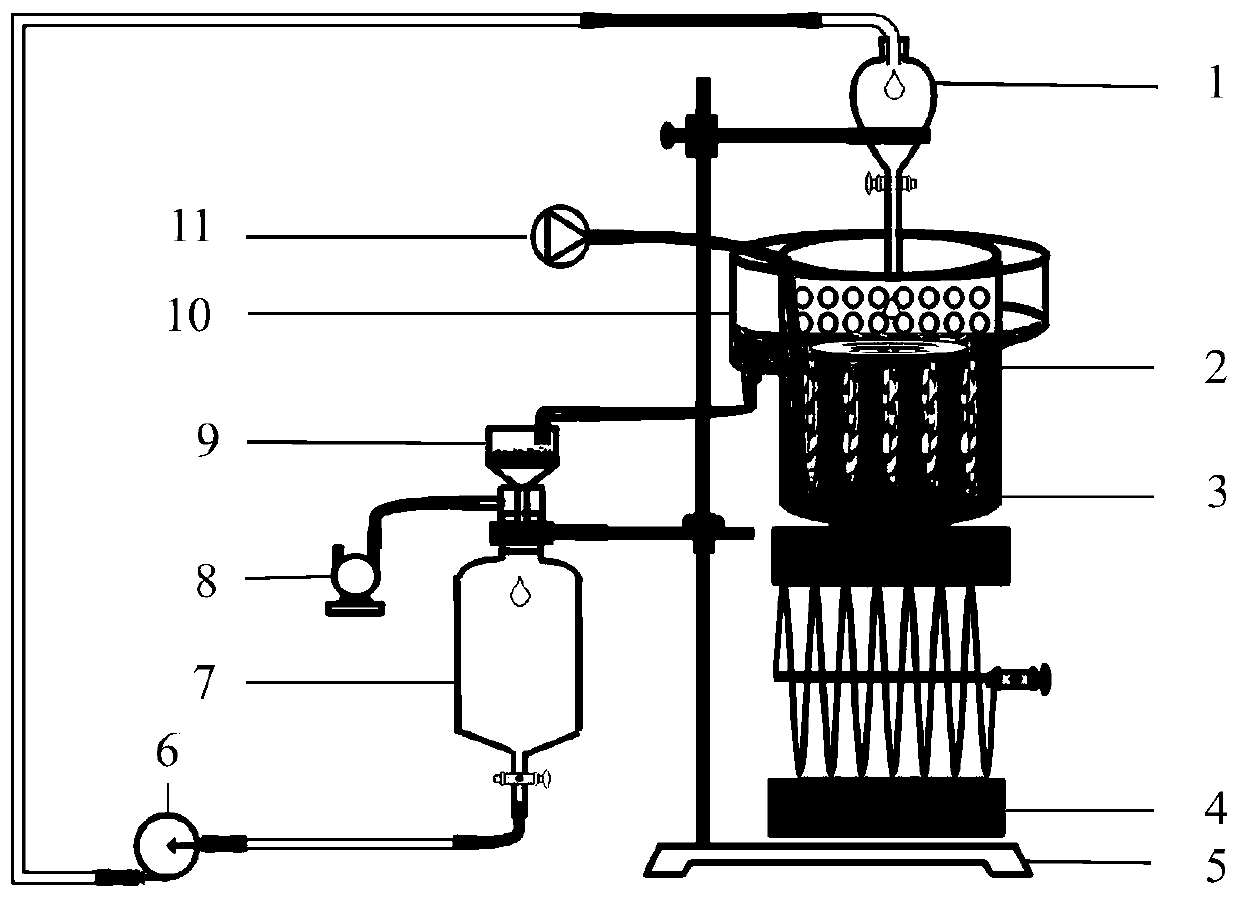Device and method for circularly separating soil microplastics based on sodium bromide solution
A technology of solution circulation and sodium bromide, which is applied in the field of separation, can solve the problems of difficult separation of high-density microplastics, long time consumption, and large consumption of reagents, and achieve the effects of reducing wall sticking, reducing procedures, and saving reagents
- Summary
- Abstract
- Description
- Claims
- Application Information
AI Technical Summary
Problems solved by technology
Method used
Image
Examples
Embodiment 1
[0061] Taking the separation efficiency of PA, PP, PE, PET, POM, PVC, PC, ABS, PMMA and PS microplastics in soil as an example
[0062] Specific process:
[0063] ① Weigh 50g soil sample (this soil sample is a normal soil sample collected from the campus, without microplastic removal treatment, but the microplastics added in Examples 1-3 are microplastics that have been dyed).
[0064] ②Select 20 granular microplastics (such as PP) of the same type with a size of 1-3mm that have been marked by Nile Red dyeing, and mix them evenly into the soil sample.
[0065] ③ Prepare 200ml saturated sodium bromide solution.
[0066] ④ Pour 100ml of saturated sodium bromide solution into the 2-separator, turn on the aeration device, and then pour the mixed soil sample.
[0067] ⑤ 3-Aeration plate is connected to 11-adjustable aeration pump, aerate for 30 minutes, and then stand for 2 hours.
[0068] ⑥ Put the separator into the soil microplastic separation device, and place a filter membr...
Embodiment 2
[0079] Taking PE as an example, PE granular microplastics with particle sizes of 100-500 μm, 500-1000 μm, and 1000-3000 μm were selected to conduct experiments respectively. The specific process refers to Example 1. The recovery rate of PE microplastics with three particle sizes 83%, 95%, 100%, respectively.
Embodiment 3
[0081] Taking PE as an example, the recovery rate of film-like, fibrous, and granular PE microplastics (500-1000 μm) in soil is studied. The specific process refers to Example 1. The recovery rates of the three shapes of PE microplastics reach 80% respectively. , 83%, 95%.
PUM
| Property | Measurement | Unit |
|---|---|---|
| Diameter | aaaaa | aaaaa |
| The inside diameter of | aaaaa | aaaaa |
| Outer diameter | aaaaa | aaaaa |
Abstract
Description
Claims
Application Information
 Login to View More
Login to View More - R&D
- Intellectual Property
- Life Sciences
- Materials
- Tech Scout
- Unparalleled Data Quality
- Higher Quality Content
- 60% Fewer Hallucinations
Browse by: Latest US Patents, China's latest patents, Technical Efficacy Thesaurus, Application Domain, Technology Topic, Popular Technical Reports.
© 2025 PatSnap. All rights reserved.Legal|Privacy policy|Modern Slavery Act Transparency Statement|Sitemap|About US| Contact US: help@patsnap.com

